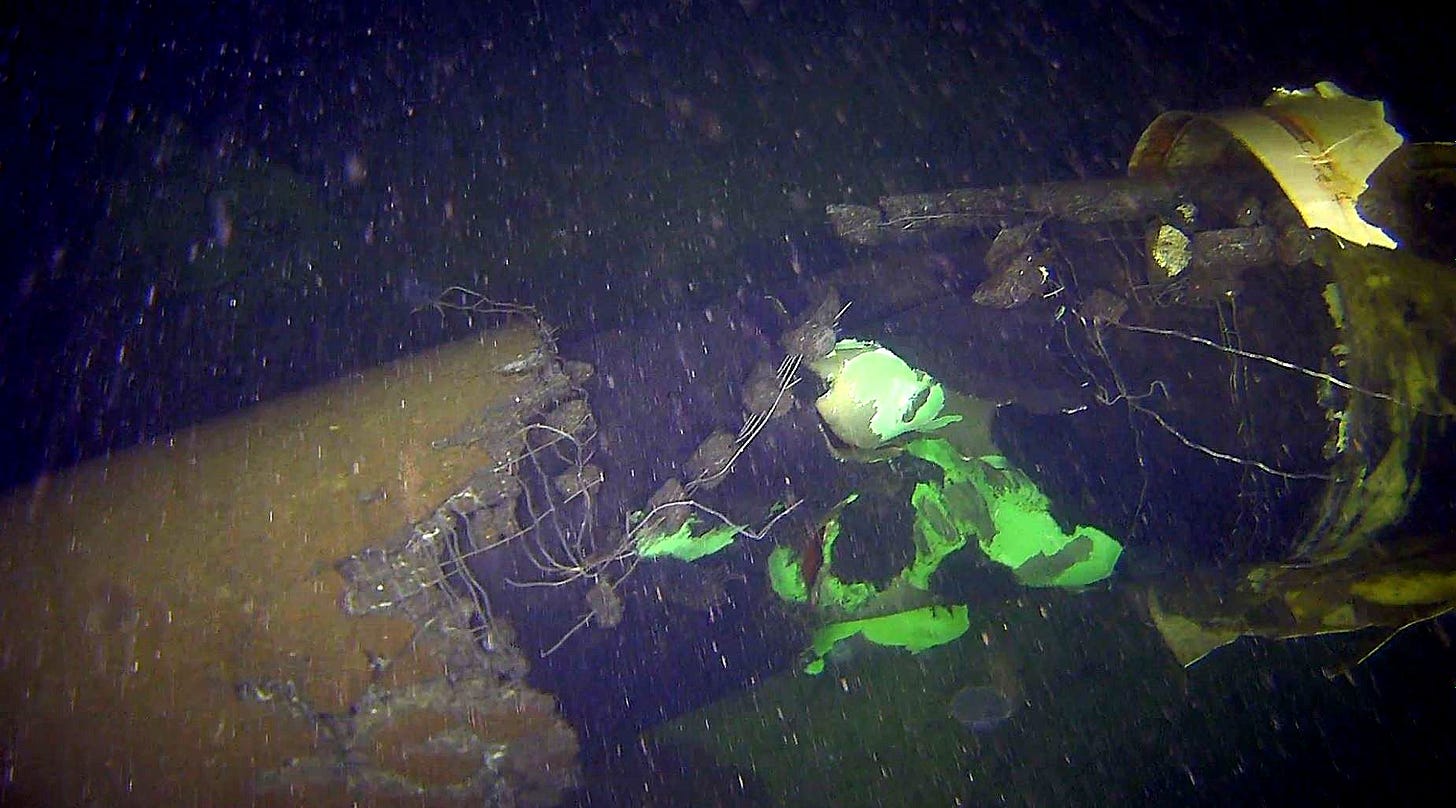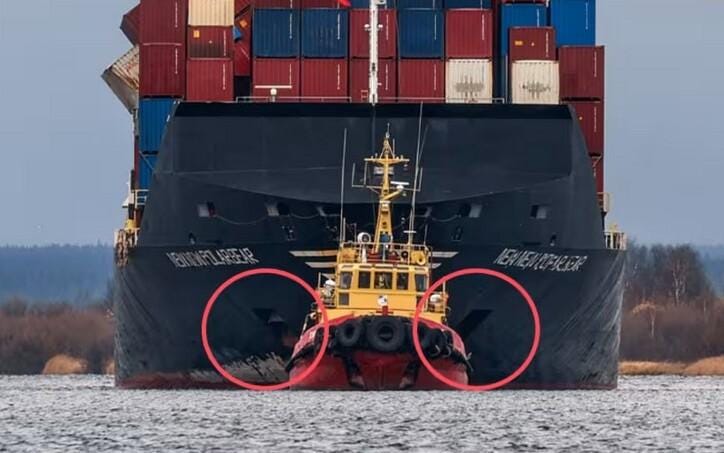First Nord Stream, now Balticconnector: What is happening to European Baltic gas pipelines?
On 26 September 2022, the Nord Stream pipelines bringing Russian gas to Germany via the Baltic Sea were attacked in a series of clandestine bombings. According to Seymour Hersh, the sabotage was planned by the Biden administration in late 2021, and carried out by U.S. Navy divers in collaboration with Norway. While Hersh’s report remains unconfirmed, the sabotage was almost surely a NATO operation. A recent report in The Washington Post, detailing the assistance the CIA has provided to the Ukrainian SBU in their attacks on high-profile targets like Darya Dugina, Valery Gerasimov (who narrowly survived) and the Kerch Bridge, contains a buried denial by anonymous “Ukraine officials” that their agents were “directly involved in the … attack on the Nord Stream 2 pipeline,” while repeating that Western intelligence assessments hold “that Ukraine was linked to the plot.” I take this to mean that Ukrainian intelligence was responsible for planting the false trail of evidence pointing to the Andromeda, while other NATO parties carried out the actual bombing.
A year and two weeks after the Nord Stream bombings, in the early morning of 8 October 2023, a second Baltic pipeline experienced a mysterious rupture. This time it was the undersea Blaticconnector, which connects the Finnish and Estonian gas grids. The sudden pressure collapse occurred around the same time that sensors detected damage to undersea telecommunications cables running from Estonia to Finland and Sweden. The damage to the cables was minor, but the Balticonnector will take at least until April 2024 to repair. Since Finland stopped importing Russian gas in 2022, the country relies heavily on LNG imports from the United States, and the pipeline outage is not projected to have serious implications for the gas supply in either Estonia or Finland.
The timing of the damage aligned with the movements of a Hong Kong-flagged container ship named NewNew Polar Bear, on its 3–8 October voyage from the Russian naval base at Baltiysk (near Kaliningrad) to St. Petersburg:

On Tuesday, Finnish authorities confirmed suspicions that the damage was caused by a 6-tonne anchor, which they have recovered from the seabed:
The National Bureau of Investigation stated at the press conference today that it has made progress in the investigation of the gas pipeline damage. …
General Head of Investigation Detective Superintendent Risto Lohi described that on the seabed, a 1.5 to 4 metre-wide dragging trail is seen to lead to the point of damage in the gas pipeline.
In the distance of a few metres from the gas pipeline damage point, there was an anchor which is believed to have caused the wide dragging trail and the damage itself.
Early this morning the anchor was lifted up. There are traces in it which indicate that it has been in contact with the gas pipeline, Lohi says.
From the finding point of the anchor onward, a narrow dragging trace is to be seen and it matches size-wise with the part connecting the anchor to the chain.
These observations in connection with data analysed on the traffic of the vessels have corroborated the main line of investigation concerning the role of the vessel Newnew Polar Bear of a Chinese shipping company and flying the flag of Hong Kong in the incident.

While Finnish authorities remain noncommittal on the question of sabotage, Swedish investigators insist that the damage to their telecommunications cables was intentional. Analysts also have a hard time understanding how a container ship could have unknowingly dropped a 6-tonne anchor, let alone dragged it over many kilometres without anybody noticing:
“I’ve never seen an anchor manoeuvre under eight knots of speed,” says [Stefan Krüger, Professor for Shipping Security at TU Harburg]. He also considers it unlikely that the anchor could have dropped unnoticed due to a technical problem, based on his experience of ships of this size.
“When an anchor blows out of the winch, it will awaken half the ship. It makes a hell of a noise,” says Krüger, adding that in such cases the anchor chain usually breaks completely. “You don’t drag a fallen anchor across the seabed for kilometres.”
But this is exactly what the furrow found by divers points to … “If these accounts turn out to be accurate, the most plausible explanation would be that the captain knew exactly what he was doing,” Krüger says.
The Russian maritime journalist Mikhail Voytenko, on the other hand, argues that the damage was accidental, though his reasoning is far from convincing, and seems even to suggest the opposite scenario of a symbolic reprisal for Nord Stream:
Intentional sabotage is highly improbable, for just one sound reason – this NewNew Polar Bear ship is a darling of Russia and China, both shipping and media. She’s the first to launch a new direct China-Russia container service via the Northern Sea Route, hailed by national media as a breakthrough and a blow to Western attempts to blockade Russian sea trade. It’s just unthinkable, that of all ships, this one could be used for bombardment of pipeline with her anchors (that in itself being a rather stupid idea).
The captain of the NewNew Polar Bear docked his vessel at St. Petersburg on 8 October, hours after allegedly rupturing the Balticconnector. Then, as Finnish investigators scrambled to figure out what had happened to their pipeline, he steered his ship back through the Baltic.
More from the Finnish press release:
…Lohi stated that Newnew Polar Bear was contacted several times, but they were not willing to cooperate.
The police had no competence to take any coercive measures against the vessel, since it sailed in the exclusive economic zone of Finland, which is out of the police competence in this respect, Lohi says.
While the Finns watched, the NewNew Polar Bear sailed north around the Scandinavian peninsula into the Russian waters of the White Sea, docking at the port of Arkhangelsk on 21 October. The next day, this press photo of the ship made the rounds, showing a pointedly missing port anchor:
If you look closely, you’ll notice another oddity, namely the collapsing starboard-side containers. Apparently, NewNew Polar Bear’s escape was not uneventful.
The ship’s owners have obtained permission from Russia to take the Northern Sea Route east into the Pacific, with assistance from a state-owned Russian ice-breaker. As the Barents Observer reports, a prior permission had listed the NewNew Polar Bear’s operator as Hainan Xin Xin Yang Shipping Co., but the current license reveals the vessel is now being run by Torgmoll, “a Russian-registered company with offices in Moscow and Shanghai.”
According to Torgmoll’s website, the company is specialising on logistics between China and Europe, and is keenly interested in developing Beijing’s Belt and Road Initiative. The company is represented with a member in the Russian-Chinese Business Forum, and is headed by Yelena V. Maksimova.
Judging from a Russian business registry, Maksimova is connected with Ke Jin, a representative of the NewNew Shipping Line in Russia.
Speaking at a conference in Moscow this summer, Ke Jin said that NewNew Shipping Line planned to put five ships to sea on a container route between ports in Russia and China in 2023 with transit through the Northern Sea Route (NSR).
One of these ships, Ke Jin said, would sail from Arkhangelsk to China. This would be the NewNew Polar Bear. If this is a backhanded reprisal for Nord Stream, then we can say it was planned since at least last summer, months after Finland officially joined NATO on 4 April 2023.





"What is happening to European Baltic gas pipelines?"
------------
FREEDOM AND DEMOCRACY
so it's true. the world really is being run by 12-yr.-old boys.
to be sure, i think 12-yr.old boys are great, generally. but i wouldn't put them in charge of anything more complicated than cleaning up their rooms, and i wouldn't have much hope for the success of that mission.